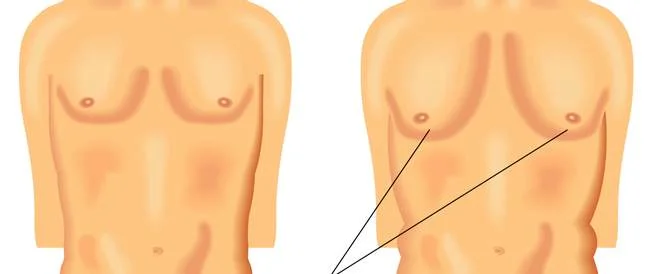Gynecomastia in Men Gynecomastia, or the enlargement of male breast tissue, refers to a benign increase in breast tissue in men. This condition may affect one breast or both. Gynecomastia accounts for approximately 60% of male breast-related issues and 85% of breast lumps in men. It is not restricted to a specific age group and can develop at any stage of life. However, around 40% of cases occur in adolescent boys aged 14 to 15.5, often due to hormonal changes, medication use, or even without a known cause.
The most prominent symptom of gynecomastia in men is the presence of a breast lump that is in the process of enlargement.
In about one-third of cases, the lump is sensitive to touch, meaning it can be felt through palpation. Additionally, in approximately one-third of cases, the lump appears on one side only, affecting one breast without the other. The lump often appears in the center of the breast but may also develop on the edges.
Breast tissue enlarges in response to an increase in estrogen hormone levels, while it is suppressed by testosterone.
Under normal conditions, both hormones exist in both genders, with testosterone levels being higher than estrogen levels in men, whereas the opposite is true for women.
When estrogen levels exceed testosterone levels in men, breast tissue enlargement occurs.
The main factors that increase the risk of developing gynecomastia in men include:
- Obesity.
- Poor diet.
- Liver diseases.
- Androgen deficiency.
- Hypogonadism.
- Kidney failure.
- Use of certain medications, such as steroids and androgens.
Complications of gynecomastia in men are rare, but this condition can cause psychological and emotional distress.
The first step in treatment is identifying the underlying cause to address it properly. It is worth noting that in 75% of cases, the exact cause remains unknown.



